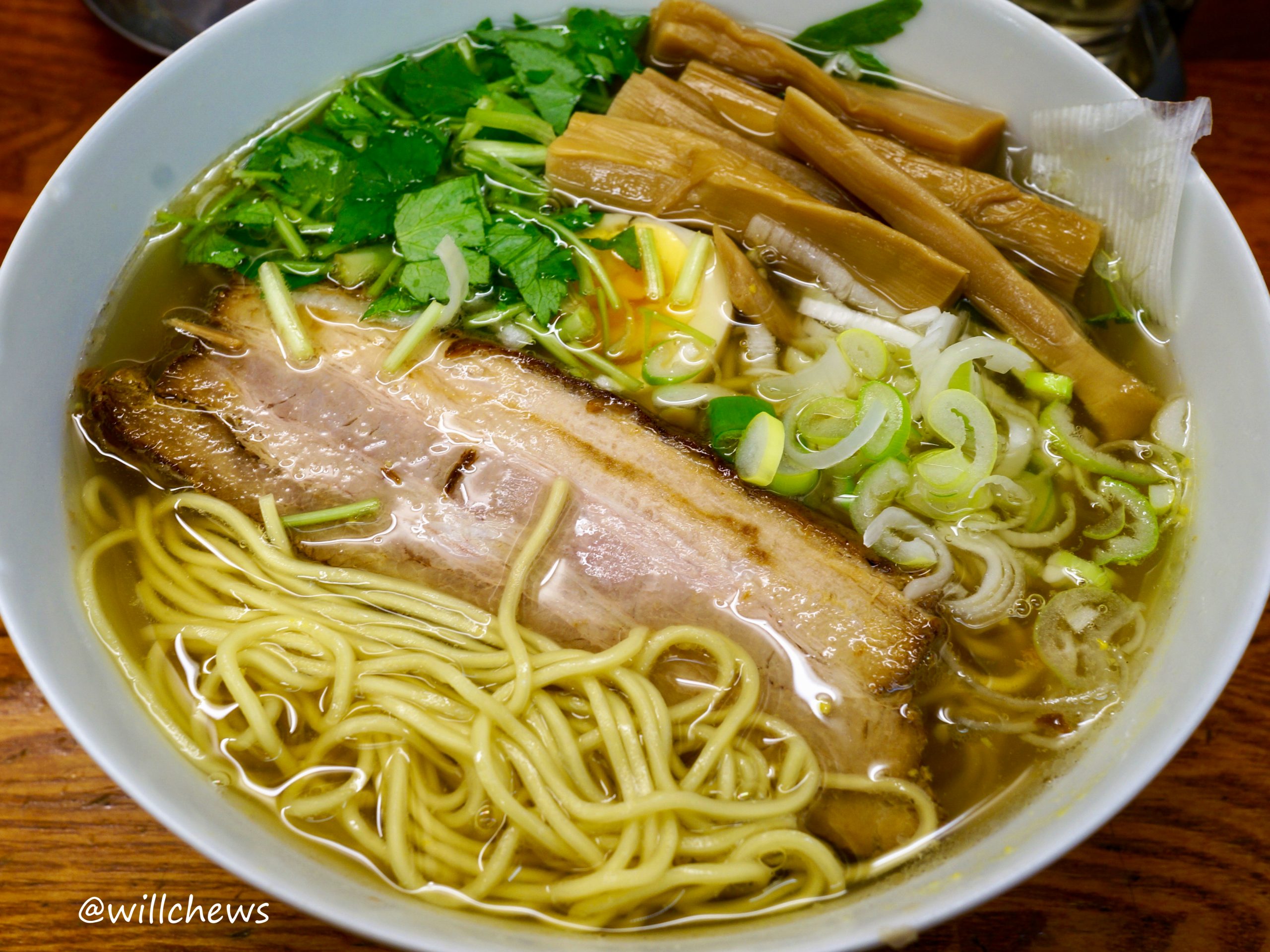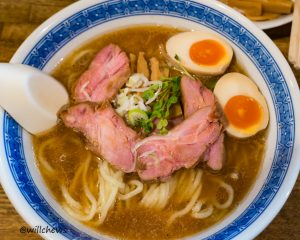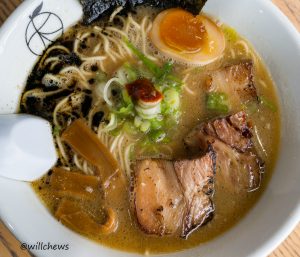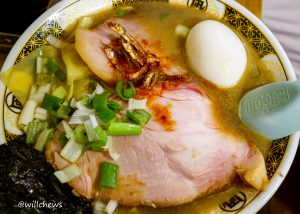Ramen No. 67: Hyottoko | Yuzu Shio Ramen w/ Extra Menma
For most ramen enthusiasts, the mention of yuzu makes them immediately think of Afuri, which has propelled to international recognition thanks to the praise bestowed upon it by the likes of Ivan Orkin and Anthony Bourdain. But my background research for this review revealed to me that Hyottoko, a small ramen stall located in the basement of the Tokyo Kotsu Kaikan in Yurakucho, was actually one of the originators of yuzu ramen, according to Ramen Guide Japan. Run by a friendly old couple, the snug little stall only has room for 7 people in its counter, so expect to wait in line, especially on weekdays as salarymen buzz about.
I’m glad to have learned about Hyottoko’s contribution to yuzu ramen, as I think this shop’s integration of yuzu into its shio broth is better done than most, certainly better than the overpowered sour notes in Afuri’s yuzu ramen. Hyottoko’s version uses yuzu juice within the broth in volumes that don’t overpower the subtle flavors and chicken notes of the light shio broth. It’s a solid broth, though my bowl apparently lacked the yuzu peel purée that RGJ’s bowl had. The chashu was similarly solid: a good, thick slab of pork belly that was lightly seared on the edges but didn’t have that much more to offer in flavor, just a well-roasted (big) piece of pork belly. I wasn’t a huge fan of the noodles, which I thought were chewy rather thick and overly round, like the spaghetti my father used to churn out of his pastamaker. Special recognition should be given to the menma, which were thick, chewy, and well-pickled; well worth selecting as an extra.
Overall, this is a well-balanced bowl of shio ramen and a much more preferable conception of how to integrate yuzu flavors into ramen. It’s not my any means a perfect bowl–neither the chashu nor noodles were much above average–but it’s a shop well worth visiting if one is walking around in nearby Ginza. There’s also a Ginza location that serves the same menu at the same very reasonable prices–for any ramen shop in Tokyo, not just for Ginza–in a more café-like setting. But I’d rather stick with the original because of its location. (Read on!)
Neighborhood Notes: Hyottoko is located in the Tokyo Kotsu Kaikan building in the Yurakucho–有楽町, literally, “fun-filled neighborhood”–business district. The area is a somewhat of a no-man’s land between three other Tokyo neighborhoods with much more defined personalities; as City-Cost succinctly puts it, “sandwiched between posh Ginza, tired and drunk Shimbashi, and straight-edged Marunouchi, Yurakucho knows it needs to be a Jack-of-all-trades to survive.” The immediate area around Tokyo Kotsu Kaikan still carries vestiges of early postwar, “Showa-era” Tokyo: it hosted black markets as well as as Sushi Yokocho (“Sushi Alley”), which had numerous standing bars (立飲み屋, tachinomiya) and sushi shops catering to salarymen getting off work, such as journalists from the Asahi Shimbun, one of Japan’s largest dailies. The atmosphere of these informal eateries have been preserved by smoke-filled izakaya–from the charcoal for yakitori (grilled chicken) and salarymen’s cigarettes–snugly ensconcedunder the shinkansen and JR Tokaido/Yamanote/Keihin-Tohoku tracks leading from Yurakucho to Tokyo Station. Such locations are well worth a visit for a chicken skewer and a beer or two, if only to see another facet of Tokyo.
Tokyo Kotsu Kaikan itself was rebuilt in 1965 to serve as the headquarters for Tokyo’s Bureau of Transportation. Its construction occurred during the city’s revitalization and new construction around the time of the 1964 Tokyo Olympics, reflective of Japan’s decade-plus-long economic boom and the country’s re-introduction into the international stage. While I’m not entirely if the building still houses the metropolitan transportation bureau, it has certainly evolved to become a shopping and exhibition space, particularly for Japanese “antenna shops,” which are stores that sell only products from a particular Japanese prefecture. As of 2017, there were 17 antenna shops within the building. Of particular note is the antenna shop for Wakayama prefecture, a sleepy peninsula to the east of Osaka and Kyoto best known for its citrus. But it’s also home to Japan’s oldest soy sauce brewery, and the Wakayama antenna shop located on the same level as Hyottoko carries Yuasa soy sauce in 200ml and 700ml bottles, well worth considering as a gift.
(Of course, a future ramen review might make the argument that visiting the actual Yuasa brewery is worth doing, even from a ramen standpoint)
Tier 3
Q Factor: 15 minutes
Price: Yuzu Shio Ramen (¥730) Menma (¥110)
麺屋ひょっとこ (Menya Hyottoko)
〒100-0006 東京都千代田区有楽町2-10-1 東京交通会館B1F
Yurakucho Station (JR Yamanote, JR Keihin-Tohoku Lines, Yurakucho Line)



